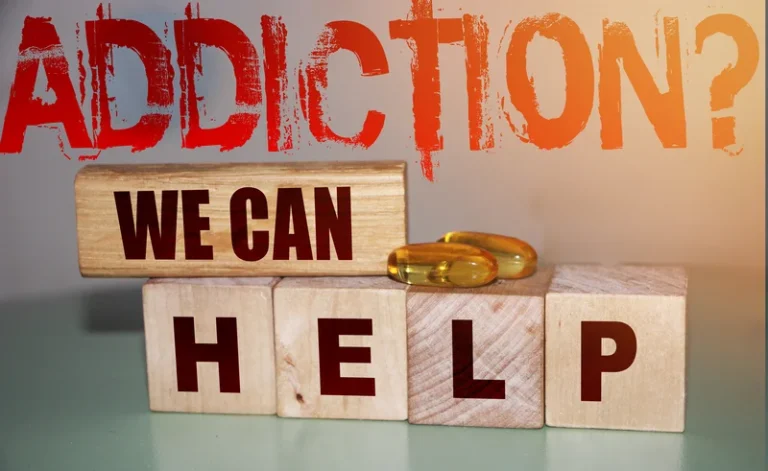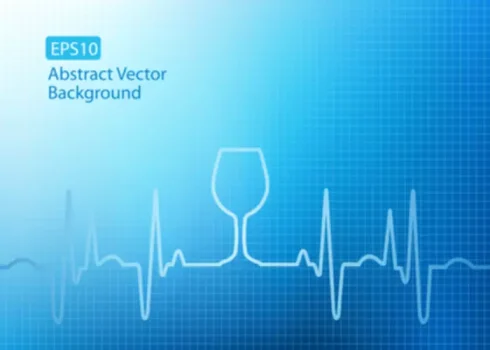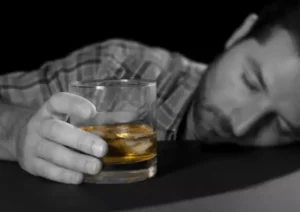Cannabinoid Hyperemesis Syndrome: Public Health Implications and a Novel Model Treatment Guideline PMC
If abdominal pain is present, standard analgesics are prescribed if CWS is suspected (for CHS, the use of topical capsaicin can again only be encouraged). During their time in our ED, these patients are generally seen by our frequent user (or complex case) team. Composed of specialized community outreach nurses, the aim is to identify what support systems the patient has in place in the community but also helps, in case of recurrent visits, determine what triggers have led to renewed consumption, to enable ambulatory follow-up and promote long-term abstinence. They are also trained, and take the time, to explain the diagnosis (including the pathophysiological pathways) and, for CHS, discuss the risk of developing a withdrawal syndrome (CWS) [44], all while promoting complete abstinence. Withdrawal symptoms seem to respond well to oral THC substitution [30], the concept being that these will interact with CB1 receptors, in a bid to counter severe symptoms due to rapid downregulation from withdrawal.
Cannabinoid hyperemesis syndrome: public health implications and a novel model treatment guideline
The almost pathognomic aspect of a patient’s presenting history is that their symptoms are relieved by hot baths or shower. This activity introduces the pathophysiology, clinical manifestation, and management of cannabis hyperemesis. Despite the syndrome’s increasing prevalence, many physicians are unfamiliar with its diagnosis and treatment. The expert consensus process used to develop the model guideline is cannabinoid hyperemesis syndrome also described. One suggested reason is via the stimulation of the dopaminergic system by cannabinoids in the nucleus accumbens. While understimulation of this system leads to vomiting and abdominal pain, this reward pathway can also cause paradoxical effects when overstimulated, such as anhedonia and lower positive and higher negative emotionality scores [10], all symptoms regularly seen in chronic users.
Article preview
Thus, chronic users seem to develop symptoms from stimulation of already overstimulated CB receptors (CHS) but can also develop symptoms upon cessation through decreased central nervous system stimulation (CWS). As mechanisms vary, correctly identifying which syndrome a chronic THC user is presenting is key to choosing the appropriate treatment. Working in a dose-dependent and biphasic manner, progressive desensitization of CB1 receptors can occur when overstimulated, creating paradoxical effects. This overstimulation is thought to be multifactorial and relates in part to the lipophilic properties of cannabinoids, which store in body fat and are subsequently released in chronic users (whose reserves are elevated from continuous intake) [5, 6]. The fact that not all chronic users develop CHS suggests genetic predisposition, a feature recently described, via the identification of five gene mutations which seem to confer some level of protection from paradoxical effects of overstimulation of the endocannabinoid system [7]. The correct identification of the underlying cannabis-related syndrome, and subsequent therapeutic choice, may help decrease ED presentations.
Consent for publication
The search resulted in 1262 articles with 63 of them eligible for inclusion (205 human subjects). There were 4 prospective level-2, 3 retrospective level-3 studies, 12 level-4 case series, and 44 level-5 case reports. Among level-2 studies (64 subjects), tricyclic antidepressants (TCAs) and lorazepam were discussed as effective long- and short-term treatments, respectively, in two studies. Ondansetron, promethazine, diphenhydramine, and opioids were also mentioned, but the authors did not comment on their efficacy. Among level-3 studies (43 subjects), one reported effective treatment with antiepileptics zonisamide and levetiracetam, but not TCAs. Another reported favorable response to morphine, ondansetron, and lorazepam but did not specify the actual number of patients receiving specific treatment.
Pharm/Tox CornerCannabinoid Hyperemesis Syndrome: A Review of the Presentation and Treatment
- An electrocardiogram may be useful to assess the patient’s QTc interval, especially in the context of antipsychotic medication use, as well as before the administration of certain antiemetics, which may prolong the QTc interval to extreme lengths.
- Despite the syndrome’s increasing prevalence, many physicians are unfamiliar with its diagnosis and treatment.
- Many adolescents use cannabis to manage anxiety, depression, and/or prior trauma, in which case it is crucial to offer safer options, including psychotherapy and pharmacotherapy with well-studied efficacy and AEs.
- MR and EPH conceptualized the article, reviewed the literature, and drafted the first version.
- Among level-3 studies (43 subjects), one reported effective treatment with antiepileptics zonisamide and levetiracetam, but not TCAs.
- Ondansetron, promethazine, diphenhydramine, and opioids were also mentioned, but the authors did not comment on their efficacy.
Among the level-4 case series (54 subjects), benzodiazepines, haloperidol, and capsaicin were reported as helpful. For level-5 case reports (44 subjects), benzodiazepines, metoclopramide, haloperidol, ondansetron, morphine, and capsaicin were reported as effective. Effective treatments mentioned only once included fentanyl, diazepam, promethazine, methadone, nabilone, levomepromazine, piritramide, and pantoprazole.
Pharmacologic Treatment of Cannabinoid Hyperemesis Syndrome: A Systematic Review
- As with any patient, obtaining a detailed history is a vital component to correctly establish a differential diagnosis.
- Sudden abstinence or drop in intake in patients whose dopaminergic pathway has been upregulated in response to high doses of cannabinoids could therefore theoretically cause symptoms of withdrawal.
- The correct identification of the underlying cannabis-related syndrome, and subsequent therapeutic choice, may help decrease ED presentations.
The same factors apply to clinicians, specialists, nurses, and pharmacists, as well as other healthcare personnel, to consider the diagnosis in any chronic vomiting disorder, and to better inform themselves regarding the condition. They should also have the freedom and empowerment to speak up to other team members if they feel that this may be getting overlooked in the diagnostic picture. Since the only treatment is the removal of the offending agent, accurate diagnosis is the only portal to actual management. Serotonin antagonism in the gastrointestinal tract from medications such as ondansetron, dolasetron, and granisetron likewise have varying levels of efficacy. Tricyclic antidepressants also antagonist serotonin receptors and may limit nausea due to this mechanism, though their extensive side effect profile such as transaminitis and predisposition to various dysrhythmias via QTc prolongation and QRS widening make appropriate dosing of these medications a priority. Drugs with an anticholinergic effect may likewise block medullary mediated vomiting, though they may have minimal impact on visceral stimulation, including the crippling abdominal cramping pain that patients with CHS experience.
- Hot showers, if available, should also be offered as this may help reduce anxiety and will help guide your diagnosis (as pathognomonic of CHS).
- The only proven way to prevent cannabis hyperemesis syndrome is to avoid cannabis (marijuana).
- Hot showers and baths were cited in all level-4 and -5 articles as universally effective.
- Investigators sought to create a consensus guideline for rapid identification and opioid-sparing treatment of patients with CHS.
Our study emphasizes the importance of both acute care and long-term outpatient follow-up, as key processes in cannabis-related disorder treatment. Brief intervention can include motivational interviewing toward reducing harm and/or use. This may include providing information about potential cognitive, psychiatric, and physical harms of cannabis use, plus clear patient-centric recommendations. Many adolescents use cannabis to manage anxiety, depression, and/or prior trauma, in which case it is crucial to offer safer options, including psychotherapy and pharmacotherapy with well-studied efficacy and AEs. By Rome IV criteria, the diagnosis of CHS is confirmed only when symptoms resolve upon ceasing use. Clinicians should help patients toward this goal following physiologic stabilization.
An expert consensus treatment guideline is provided to assist with diagnosis and appropriate treatment of CHS. Clinicians and public health officials should identity and treat CHS patients with strategies that decrease exposure to opioids, minimize use of healthcare resources, and maximize patient safety. The patient is then observed, and, depending on symptom progression, a second dose of butyrophenone neuroleptics may be added.
Some individuals, for instance, also admitted to smoking 2000 mg of THC per day. People who use marijuana long-term — typically for about 10 to 12 years — are at risk of developing CHS. Symptoms of CHS typically come on several years after the start of chronic marijuana use.
Acute illness associated with cannabis use, by route of exposure: an observational study
Since the early 2000s, both CHS and CWS have been recognized by the ICD-10 (F12.241 and F12.30 of the 10th edition of the International Classification of Diseases, respectively). CHS is also included in the Rome IV definition as a functional gastrointestinal disorder, while CWS is encompassed in the DSM-5 (5th edition of the Diagnostic and Statistical Manual of Mental Disorders) [19, 20]. Using the keywords “Cannabis,” “Hyperemesis,” “Syndrome,” “Withdrawal,” and “Emergency Medicine,” we completed a literature review of three different electronic databases (PubMed®, Google scholar®, and Cochrane®), up to November 2021. The authors gratefully acknowledge Eric C. McDonald, MD, MPH, Medical Director, Epidemiology & Immunization Branch, County of San Diego, Health & Human Services Agency for his contributions to the CHS expert consensus guideline. A visit with a pediatric clinician is an ideal time to ensure that a teenager knows the correct information, has the opportunity to make certain contraceptive choices, and instill the knowledge that the pediatric office is a safe place to come for help. CHS is a relatively new disorder that is not only difficult to diagnose but to manage.






